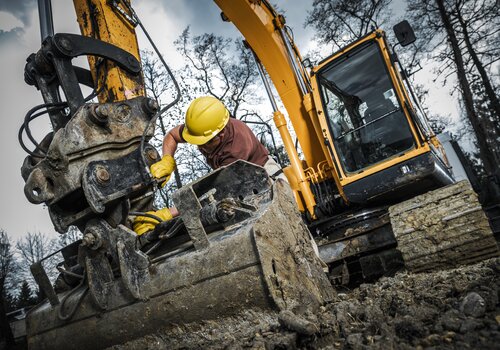The construction industry, one of the most significant contributors to the global economy, is renowned for its dynamic and multifaceted nature. From towering skyscrapers to intricate residential projects, the industry shapes the landscapes we live in. However, the complexity and risks associated with construction work underscore the critical need for comprehensive job training at every level of employment. Ensuring that all employees, from entry-level laborers to seasoned managers, receive appropriate training not only enhances productivity but also fosters a safer and more efficient work environment.
1. Enhancing Safety and Reducing Accidents
One of the foremost reasons for robust job training in construction is safety. Construction sites are inherently hazardous, with potential risks such as falls, machinery accidents and exposure to harmful substances. According to the Occupational Safety and Health Administration (OSHA), a worker died once every 96 minutes in 2022. This statistic highlights the imperative need for thorough safety training.
Training programs tailored to different roles can significantly reduce the incidence of accidents. For instance, laborers can benefit from training on the proper use of personal protective equipment (PPE) and safe handling of tools. On the other hand, supervisors and managers need to be well-versed in identifying potential hazards, conducting risk assessments and ensuring compliance with safety regulations. By equipping all employees with the necessary knowledge and skills, the industry can mitigate risks and protect its workforce.
2. Increasing Efficiency and Productivity
Effective job training is not only a cornerstone of safety but also a driver of efficiency and productivity. Well-trained employees are more adept at performing their tasks accurately and swiftly, leading to fewer errors and rework. For example, skilled carpenters with advanced training can execute precise cuts and installations, reducing material wastage and project delays. Similarly, trained equipment operators can handle machinery with greater precision, minimizing downtime and maintenance costs.
Continuous training enables workers to stay updated with the latest industry advancements and technologies. The construction sector is rapidly evolving, with innovations such as Building Information Modeling (BIM), drones and augmented reality transforming traditional practices. Employees who receive ongoing training are better equipped to leverage these technologies, enhancing overall project efficiency and competitiveness.
3. Fostering Career Development and Retention
Investing in job training also plays a pivotal role in employee career development and retention. The construction industry often faces challenges related to workforce shortages and high turnover rates. By providing comprehensive training programs, companies can demonstrate their commitment to employee growth and development, fostering loyalty and reducing turnover.
For entry-level workers, training programs offer a pathway to career advancement. Apprenticeships and vocational training enable them to acquire new skills and move up the career ladder, from laborers to skilled tradespeople and eventually to supervisory roles. This not only benefits the employees but also addresses the industry's need for skilled labor.
Offering training and development opportunities can also attract new talent to the industry. Young professionals and recent graduates are more likely to join companies that prioritize employee development and provide clear career progression paths. This can help bridge the skills gap and ensure a steady influx of qualified workers.
4. Promoting Leadership and Management Skills
Training at the managerial level is equally crucial. Effective leadership is essential for successful project execution, team coordination and conflict resolution. Managers and supervisors need specialized training to develop their leadership and management skills. This includes training in areas such as project management, communication, team building and decision-making.
A well-trained management team can inspire and motivate workers, fostering a positive work environment and enhancing overall team performance. Additionally, managers who understand the technical aspects of construction can make informed decisions, anticipate challenges and implement strategies to mitigate risks. This holistic approach to training ensures that leadership is equipped to handle the complexities of construction projects, driving success and profitability.
5. Adapting to Regulatory and Environmental Changes
The construction industry is subject to various regulations and environmental standards that continually evolve. Job training ensures that employees at all levels are aware of and comply with these regulations, avoiding legal issues and fines. For example, training programs on environmental sustainability can help companies adopt green building practices, reducing their environmental footprint and meeting regulatory requirements.
Additionally, regulatory bodies often update safety standards and protocols. Continuous training ensures that all employees are informed about the latest regulations and best practices, maintaining a culture of compliance and safety.
Comprehensive job training at every level of employment in the construction industry is indispensable. It enhances safety, increases efficiency, fosters career development, promotes effective leadership and ensures compliance with regulatory standards. As the industry continues to evolve, investing in training programs is not just a necessity but a strategic imperative. By prioritizing job training, construction companies can build a skilled, motivated and safe workforce, driving long-term success and sustainability in the industry.
Photo credit: PRAMOTEBIGSTOCK/BIGSTOCKPHOTO.COM












